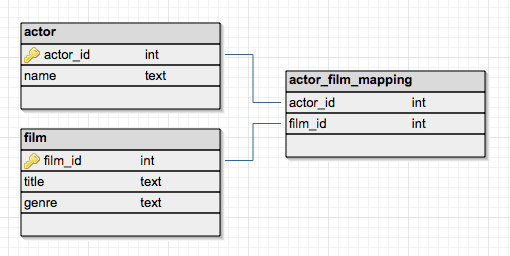This article includes a list of references, related reading, or external links, but its sources remain unclear because it lacks inline citations. (May 2018) |
An associative entity is a term used in relational and entity–relationship theory. A relational database requires the implementation of a base relation (or base table) to resolve many-to-many relationships. A base relation representing this kind of entity is called, informally, an associative table.

As mentioned above, associative entities are implemented in a database structure using associative tables, which are tables that can contain references to columns from the same or different database tables within the same database.

An associative (or junction) table maps two or more tables together by referencing the primary keys (PK) of each data table. In effect, it contains a number of foreign keys (FK), each in a many-to-one relationship from the junction table to the individual data tables. The PK of the associative table is typically composed of the FK columns themselves.
Associative tables are colloquially known under many names, including association table, bridge table, cross-reference table, crosswalk, intermediary table, intersection table, join table, junction table, link table, linking table, many-to-many resolver, map table, mapping table, pairing table, pivot table (as used in Laravel—not to be confused with the use of pivot table in spreadsheets), or transition table.